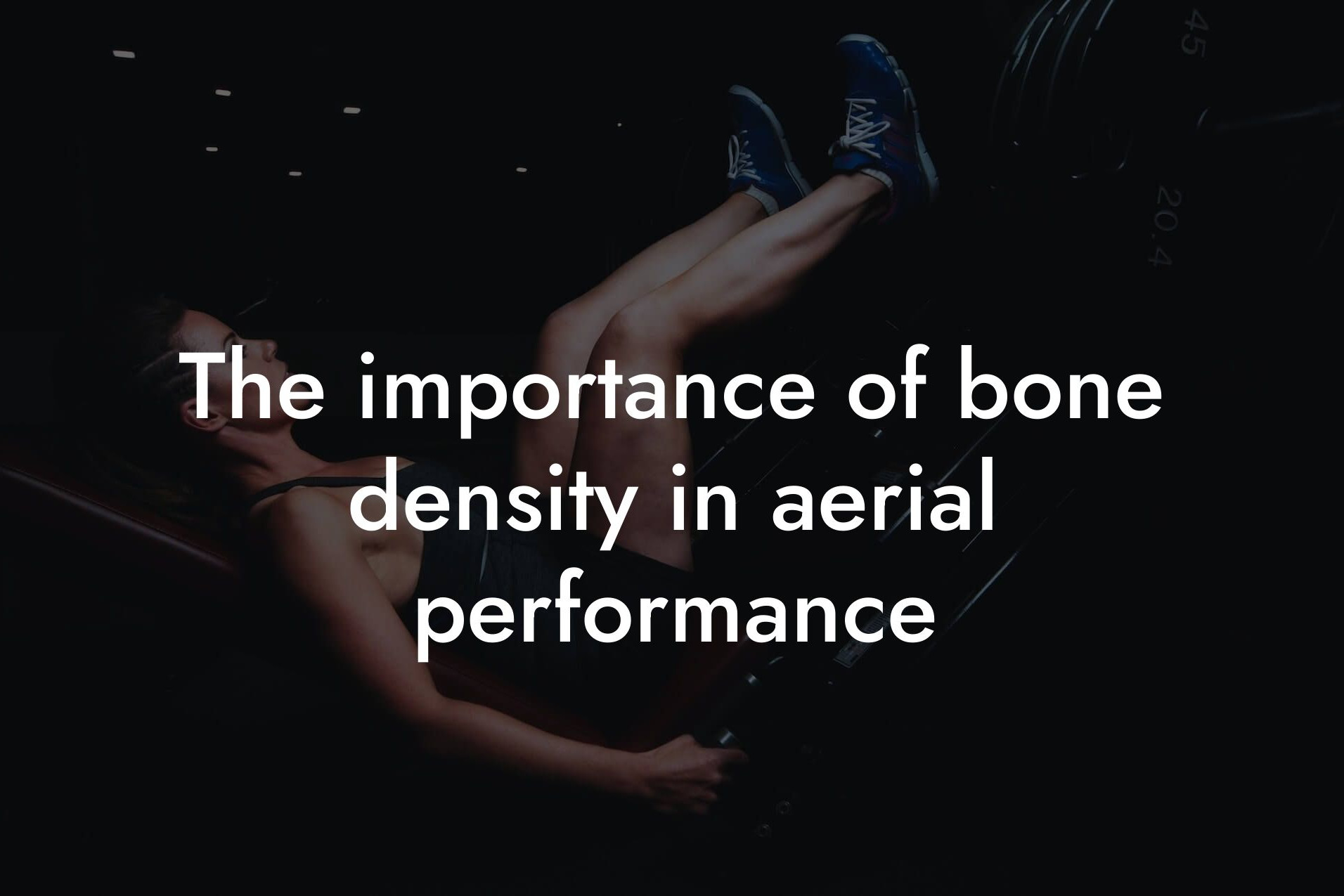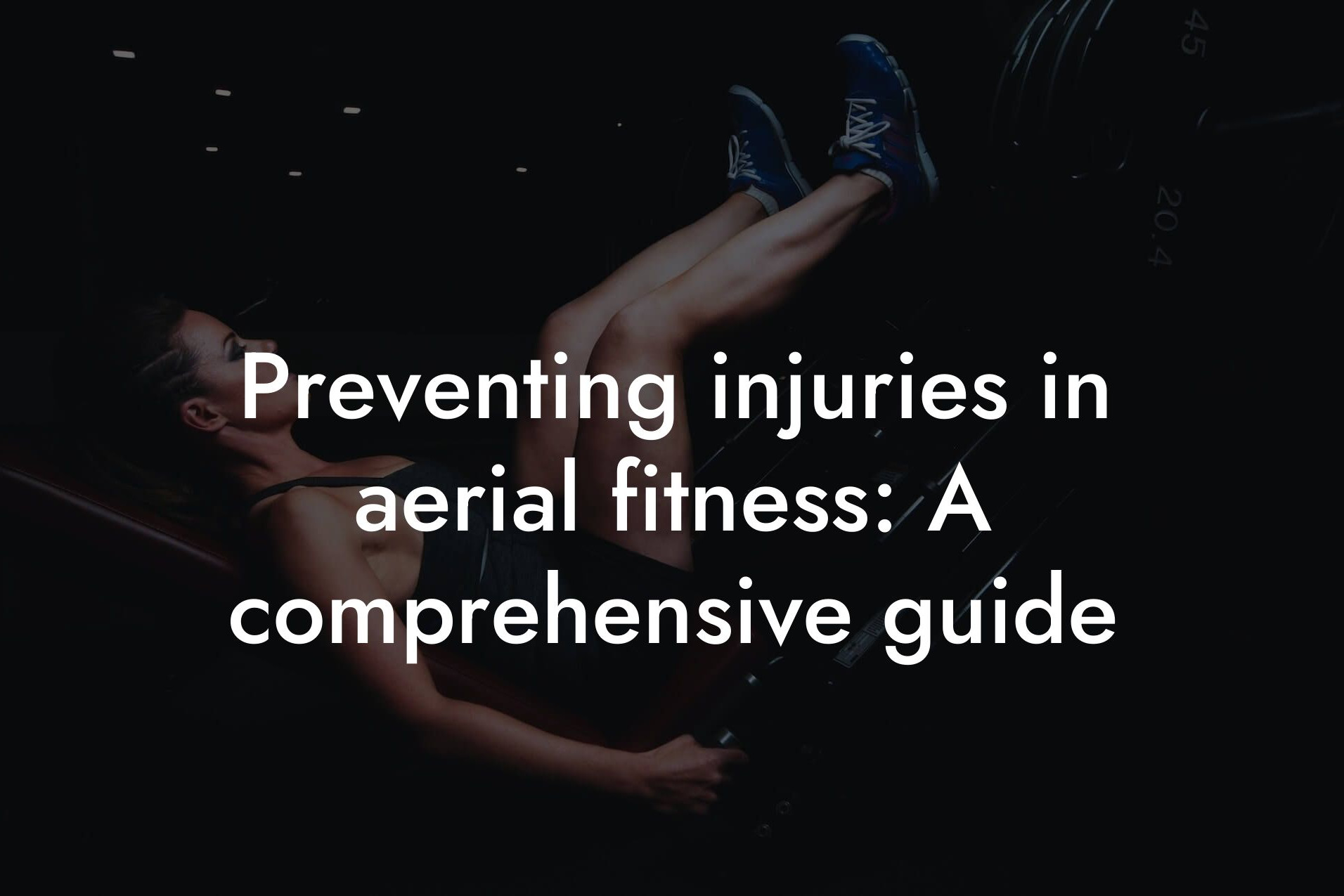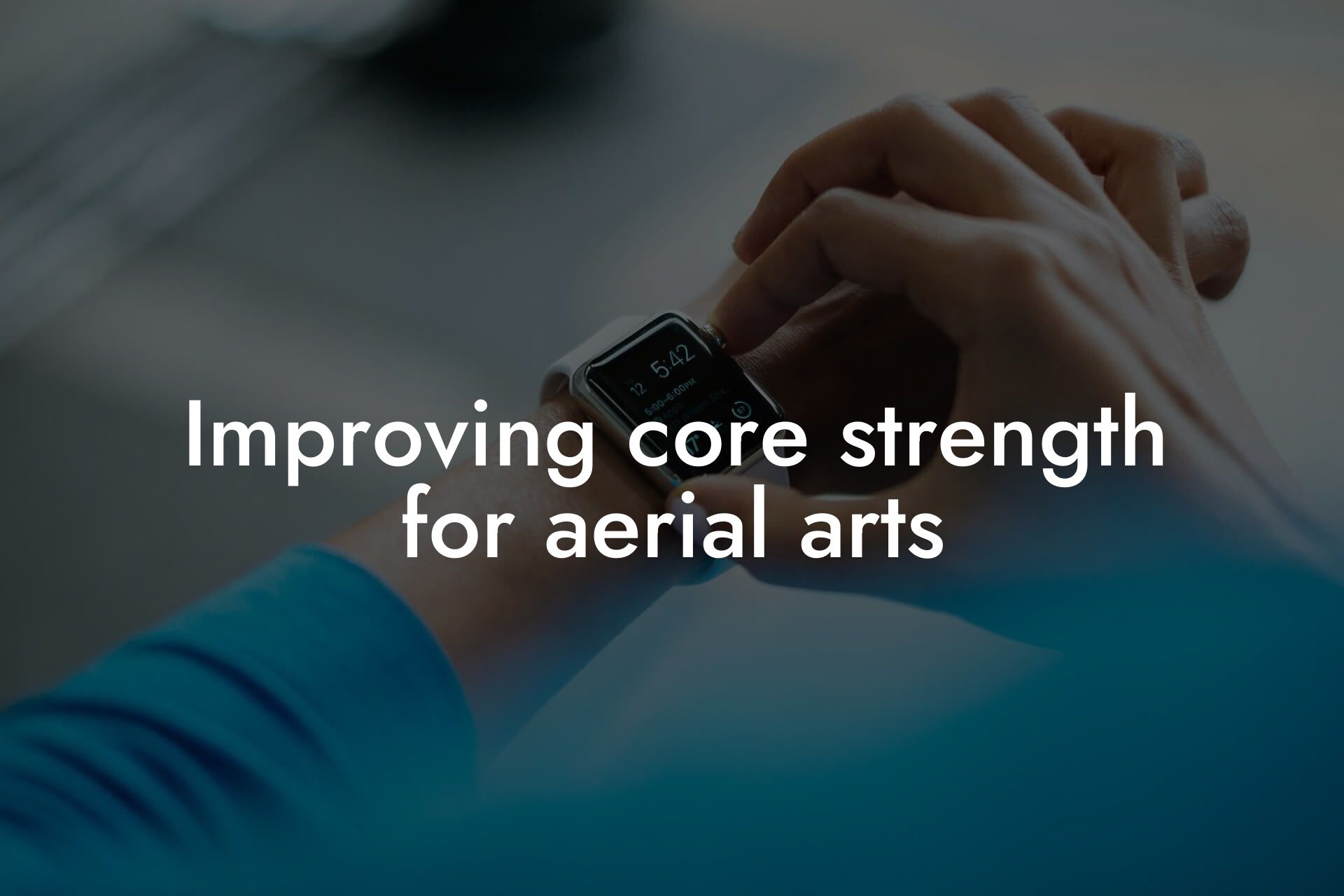As an aerial enthusiast, you understand the importance of maintaining high energy levels throughout your classes. Aerial exercises require a combination of strength, flexibility, and endurance, which can be challenging to sustain without proper nutrition. At Tano Performance Group, we're committed to helping high-earning professionals like you achieve their fitness goals and maintain a healthy physique. In this article, we'll provide you with expert nutrition tips to help you power through your aerial classes and reach new heights.
Table of Contents
- Hydrate, Hydrate, Hydrate
- Complex Carbohydrates: The Energy-Boosting Powerhouse
- Protein: The Building Block of Endurance
- Healthy Fats: The Energy-Boosting Boost
- Electrolytes: The Key to Preventing Muscle Cramps
- Pre-Workout Snacks: Fueling Your Aerial Session
- Post-Workout Recovery: Refueling for Optimal Performance
- Additional Tips for Optimal Energy
- Frequently Asked Questions
Hydrate, Hydrate, Hydrate
Adequate hydration is essential for optimal energy levels. When you're dehydrated, your body's ability to perform physical tasks is significantly impaired. Aim to drink at least 8-10 glasses of water per day, and make sure to drink water before, during, and after your aerial classes. Additionally, consider incorporating electrolyte-rich beverages like coconut water or sports drinks to help replenish lost salts and minerals.
Complex Carbohydrates: The Energy-Boosting Powerhouse
Complex carbohydrates are an aerial enthusiast's best friend. They provide sustained energy, fiber, and essential nutrients. Focus on whole, unprocessed foods like brown rice, quinoa, whole wheat bread, and vegetables like sweet potatoes, carrots, and broccoli. These foods are rich in complex carbohydrates, which will help you power through even the most challenging aerial routines.
Protein: The Building Block of Endurance
Protein is essential for building and repairing muscle tissue, which is critical for aerial exercises. Aim to consume 1.2-1.6 grams of protein per kilogram of body weight from sources like lean meats, fish, eggs, dairy, and plant-based options like beans, lentils, and tofu. Protein-rich snacks like nuts, seeds, and jerky can also help provide a quick energy boost during classes.
Healthy Fats: The Energy-Boosting Boost
Healthy fats are often overlooked, but they play a critical role in providing sustained energy. Focus on sources like nuts, seeds, avocados, and olive oil, which are rich in healthy fats. These foods will help you feel full and satisfied, reducing the need for sugary snacks and providing a steady supply of energy.
Electrolytes: The Key to Preventing Muscle Cramps
Muscle cramps are a common issue in aerial classes, but they can be prevented with proper electrolyte intake. Electrolytes like sodium, potassium, and magnesium help regulate muscle function and prevent cramping. Include electrolyte-rich foods like bananas, dates, and coconut water in your diet, and consider taking an electrolyte supplement if you're prone to muscle cramps.
Pre-Workout Snacks: Fueling Your Aerial Session
A well-timed pre-workout snack can make all the difference in your aerial class. Aim to eat a snack that combines complex carbohydrates and protein about 30-60 minutes before your class. Examples of effective pre-workout snacks include:
- Banana with almond butter
- Apple slices with peanut butter
- Energy bar with nuts and dried fruit
- Yogurt with honey and mixed berries
Post-Workout Recovery: Refueling for Optimal Performance
After your aerial class, it's essential to refuel and replenish lost energy stores. Aim to eat a meal or snack that combines complex carbohydrates and protein within 30-60 minutes after your class. This will help promote muscle recovery, reduce soreness, and prepare your body for your next aerial session. Examples of effective post-workout meals include:
- Grilled chicken with quinoa and steamed vegetables
- Salmon with brown rice and mixed berries
- Turkey and avocado wrap with mixed greens
- Smoothie bowl with banana, spinach, almond milk, and almond butter
Additional Tips for Optimal Energy
In addition to proper nutrition, there are several other factors that can impact your energy levels in aerial classes. Make sure to:
- Get at least 7-8 hours of sleep per night to help your body recover
- Avoid caffeine and sugary snacks, which can cause energy crashes
- Stay relaxed and focused, and take regular breaks to reduce mental fatigue
- Listen to your body and take rest days as needed to avoid burnout
By incorporating these nutrition tips into your daily routine, you'll be able to power through even the most challenging aerial classes with sustained energy and endurance. Remember to stay hydrated, fuel your body with complex carbohydrates, protein, and healthy fats, and prioritize rest and recovery to achieve optimal performance. At Tano Performance Group, we're committed to helping you reach your fitness goals and maintain a healthy, high-performing physique. Contact us today to learn more about our DEXA body assessment services and take your fitness journey to the next level.
Frequently Asked Questions
What are the best foods to eat before an aerial class to boost energy?
As a high-earning professional, you want to make the most out of your aerial class. To boost energy, focus on complex carbohydrates, lean proteins, and healthy fats. Opt for whole foods like oatmeal with banana and almond butter, scrambled eggs with whole-grain toast, or Greek yogurt with berries and honey. Aim to eat a balanced meal 1-2 hours before class to allow for proper digestion.
How much water should I drink before and during an aerial class?
Proper hydration is crucial for sustained energy and performance. Aim to drink at least 16-20 ounces of water 30 minutes before class, and continue to sip on water throughout the session. You can also consider a sports drink if you're engaging in high-intensity aerial activities or if you're prone to dehydration.
What are some healthy snack options to fuel my aerial practice?
As a busy professional, you need snacks that are convenient, nutritious, and easy to digest. Opt for energy-boosting snacks like nuts and seeds, dried fruits, energy bars, or jerky. You can also consider fresh fruits, carrot sticks with hummus, or trail mix with whole grains and dried fruits.
Can I eat a heavy meal before an aerial class?
It's best to avoid heavy meals before an aerial class, as they can cause discomfort, indigestion, and decreased energy. Instead, opt for a light, balanced meal or snack that's easy to digest. If you must eat a larger meal, make sure to finish eating at least 2-3 hours before class to allow for proper digestion.
How can I prevent energy crashes during an aerial class?
To prevent energy crashes, make sure to eat a balanced meal or snack before class, stay hydrated, and listen to your body. If you start to feel fatigued, take a break, stretch, and refuel with a healthy snack. Additionally, consider incorporating adaptogenic herbs like ginseng or ashwagandha into your diet to help regulate energy levels.
What role does protein play in sustained energy for aerial classes?
Protein is essential for sustained energy and muscle function. Include protein-rich foods like lean meats, fish, eggs, dairy, legumes, and nuts in your pre-class meal or snack. Aim for 15-20 grams of protein to help fuel your aerial practice.
Can I consume caffeine before an aerial class?
In moderation, caffeine can provide a energy boost. However, be cautious not to overdo it, as excessive caffeine can lead to jitters, anxiety, and decreased performance. Consider a small amount of caffeine, such as in a cup of coffee or green tea, 30-60 minutes before class.
How does bone density impact my aerial practice?
As a high-earning professional, you're likely interested in maintaining strong bones. Aerial activities can help improve bone density, especially in the wrists, shoulders, and spine. However, if you have osteoporosis or osteopenia, consult with your doctor or a qualified aerial instructor to modify your practice and reduce the risk of injury.
What are some post-aerial class nutrition tips for recovery?
After an aerial class, focus on replenishing energy stores and supporting muscle recovery. Opt for a balanced meal or snack that includes complex carbohydrates, lean protein, and healthy fats. Consider a post-workout smoothie with banana, protein powder, and almond milk, or a meal with grilled chicken, sweet potato, and avocado.
How can I maintain a healthy body fat percentage for aerial activities?
Maintaining a healthy body fat percentage is crucial for aerial activities. Focus on a balanced diet with plenty of fruits, vegetables, whole grains, lean proteins, and healthy fats. Aim to eat nutrient-dense foods 80-90% of the time, and allow for indulgences 10-20% of the time. Regular exercise, including aerial activities, can also help maintain a healthy body fat percentage.
What are some common nutrition mistakes to avoid in aerial classes?
Avoid common nutrition mistakes like skipping meals, consuming high-sugar foods, or not staying hydrated. These mistakes can lead to energy crashes, decreased performance, and increased risk of injury. Instead, focus on a balanced diet, stay hydrated, and listen to your body's nutritional needs.
How can I stay motivated to prioritize nutrition for aerial classes?
Staying motivated requires setting goals, tracking progress, and celebrating small victories. Set specific, measurable, and achievable goals for your aerial practice, and reward yourself when you reach them. Share your goals with a friend or accountability partner to increase motivation and support.
What role does sleep play in sustained energy for aerial classes?
Sleep is essential for energy recovery and muscle repair. Aim for 7-9 hours of sleep each night to help your body recover from aerial activities. Poor sleep can lead to decreased energy, fatigue, and decreased performance.
Can I consume sports supplements before an aerial class?
Sports supplements can be helpful, but always consult with a healthcare professional or registered dietitian before adding new supplements to your routine. Some supplements, like creatine or branched-chain amino acids (BCAAs), may be beneficial for aerial activities, but always follow the recommended dosage and guidelines.
How can I modify my nutrition plan for aerial classes based on my body type?
Modify your nutrition plan based on your body type by focusing on macronutrient ratios that support your specific needs. For example, if you're an ectomorph, you may need more protein and calories to support muscle growth and energy. Consult with a registered dietitian or nutritionist to develop a personalized nutrition plan.
What are some healthy fats to include in my aerial nutrition plan?
Healthy fats are essential for sustained energy and hormone regulation. Include sources like nuts, seeds, avocados, olive oil, and fatty fish in your aerial nutrition plan. Aim for 20-30% of your daily calories to come from healthy fats.
How can I stay hydrated during hot aerial classes?
Staying hydrated during hot aerial classes is crucial. Aim to drink at least 16-20 ounces of water 30 minutes before class, and continue to sip on water throughout the session. Consider a sports drink if you're engaging in high-intensity aerial activities or if you're prone to dehydration.
What are some nutrition tips for aerial classes during menstruation?
During menstruation, focus on nutrient-dense foods that support energy and hormone regulation. Include foods rich in iron, like lean meats, fish, and fortified cereals, to help replenish iron stores. Stay hydrated, and consider incorporating adaptogenic herbs like ginger or turmeric to help alleviate symptoms.
Can I consume electrolyte-rich foods before an aerial class?
Electrolyte-rich foods can help support hydration and energy. Include foods like bananas, dates, coconut water, or electrolyte-rich beverages in your pre-class meal or snack. Aim to consume these foods 30-60 minutes before class to allow for proper digestion.
How can I prioritize nutrition for aerial classes during a busy schedule?
Prioritize nutrition by meal prepping, packing snacks, and planning your meals in advance. Consider working with a registered dietitian or nutritionist to develop a personalized nutrition plan that fits your busy schedule. Make nutrition a priority, and you'll see improvements in your aerial practice and overall health.
What are some common misconceptions about nutrition for aerial classes?
Common misconceptions include believing that you need to eat a specific diet or follow a certain nutrition plan to be successful in aerial classes. Instead, focus on a balanced diet that includes a variety of whole foods, stay hydrated, and listen to your body's nutritional needs. Consult with a registered dietitian or nutritionist to develop a personalized nutrition plan that works for you.
How can I track my nutrition progress for aerial classes?
Track your nutrition progress by keeping a food diary, using a nutrition app, or working with a registered dietitian or nutritionist. Monitor your energy levels, performance, and overall health, and make adjustments to your nutrition plan as needed.
What are some nutrition tips for aerial classes during pregnancy?
During pregnancy, focus on nutrient-dense foods that support energy and fetal development. Include foods rich in folate, iron, and calcium, and stay hydrated. Consult with your healthcare provider or a registered dietitian to develop a personalized nutrition plan that supports your aerial practice and pregnancy.
Here are some related articles you might love...
- The importance of bone density in aerial performance
- Preventing injuries in aerial fitness: A comprehensive guide
- Improving core strength for aerial arts
- Strength training tips specific to aerial fitness
- How body composition affects performance in aerial fitness
- Maintaining muscle recovery with aerial training
- Reducing body fat for improved strength-to-weight ratio in aerial arts
- Using DEXA scans to monitor progress in aerial fitness
- Balancing strength and flexibility in aerial fitness
Zak Faulkner
Zak Faulkner is a leading authority in the realm of physical health and body composition analysis, with over 15 years of experience helping professionals optimise their fitness and well-being. As one the experts behind Tano Performance Group, Zak has dedicated his career to providing in-depth, science-backed insights that empower clients to elevate their physical performance and overall health.
With extensive knowledge of DEXA technology, Zak specializes in delivering comprehensive body assessments that offer precise data on body fat, muscle mass, bone density, and overall physique. His expertise enables individuals to make informed decisions and achieve their fitness goals with accuracy and confidence. Zak’s approach is rooted in a deep understanding of human physiology, combined with a passion for helping clients unlock their full potential through personalised strategies.
Over the years, Zak has earned a reputation for his commitment to excellence, precision, and client-focused service. His guidance is trusted by top professionals who demand the best when it comes to their health. Whether advising on fitness programs, nutritional strategies, or long-term wellness plans, Zak Faulkner’s insights are a valuable resource for anyone serious about taking their health and fitness to the next level.
At Tano Performance Group, Zak continues to lead our Content Team revolutionising how professionals approach their physical health, offering unparalleled expertise that drives real results.




